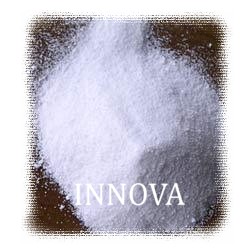|
Sodium Tri
Poly Phosphate (STPP)
The Sodium Tripolyphosphate
that we provide is abbreviated as STPP and has a chemical formula
Na5P3O10. The Sodium Tripolyphosphate is ideal for enhancing the
performance of detergents. Besides, Sodium Tripolyphosphate is also
used in Food Industry. We are the prominent Sodium Tripolyphosphate
Suppliers in the domain. Sodium
triphosphate (STP, sometimes STPP or sodium tripolyphosphate or TPP,
is an inorganic compound with formula Na5P3O10. It is the sodium
salt of the polyphosphatepenta-anion, which is the conjugate base of
triphosphoric acid. It is produced on a large scale as a component
of many domestic and industrial products, especially detergents.
Environmental problems associated with eutrophication are attributed
to its widespread use.
Uses In detergents
The majority of STPP is consumed as a component of commercial
detergents. It serves as a "builder," industrial jargon for a water
softener. In hard water (water that contains high concentrations of
Mg2+ and Ca2+), detergents are deactivated. Being a highly charged
chelating agent, TPP5- binds to dications tightly and prevents them
from interfering with the sulfonate detergent.
Food applications
STPP is a preservative for seafood, meats, poultry, and animal
feeds.
It is common in food production as E number E451. In foods, STPP is
used as an emulsifier and to retain moisture. Many governments
regulate the quantities allowed in foods, as it can substantially
increase the sale weight of seafood in particular. The United States
Food and Drug Administration lists STPP as "generally recognized as
safe.".
Other uses
Other uses (hundreds of thousands of tons/year) include "ceramics,
leather tanning (as masking agent and synthetic tanning agent -
SYNTAN), anticaking, setting retarders, flame retardants, paper,
anticorrosion pigments, textiles, rubber manufacture,
fermentation,antifreeze."
TPP is used as a polyanion crosslinker in polysaccharide based drug
delivery.
Health effects
Polyphosphates are hydrolyzed into simpler phosphates, which in
moderate amounts are nutritious. For example, ATP, a related
derivative of triphosphate, is essential for life. Thus, the
toxicity of polyphosphates is low, as the lowest LD50 after oral
administration is >1,000 mg/kg body weight. Similarly, no mutagenic
or carcinogenic effects nor reproductive effects have been noted.
Salts of polyphosphate anions are moderately irritating to skin and
mucous membrane because they are mildly alkaline. |

